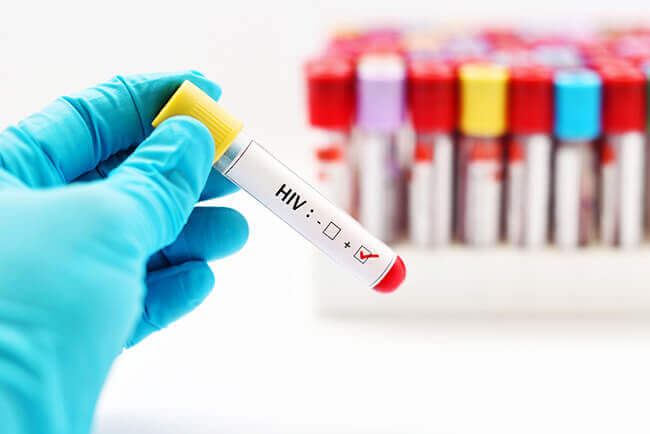The only way to be absolutely certain of your HIV status is to get tested. According to the CDC, all individuals between the ages of 13 and 64 should perform an HIV test at least once as an integral part of their routine health check. Being familiar with your HIV status will equip you with essential information that will either provide you with peace of mind or allow you to take adequate measures to keep yourself and your sexual partner(s) healthy.
This guide will answer the most frequent questions regarding HIV testing, including who is at a higher risk of contracting the infection, what types of tests are at your disposal, and what to expect from your final report.

Testing Solutions For HIV
In order to go any further, we have to make a clear distinction between HIV and AIDS. HIV stands for human immunodeficiency virus and AIDS for acquired immunodeficiency syndrome, which represents the most advanced stage of an HIV infection. This means that AIDS is caused by HIV, but it is not the same thing. If you have an HIV infection, it doesn’t mean you have AIDS or that you’ll ever have it. There have been many cases where people with HIV infections lived completely normal lives without ever developing AIDS.
Secondly, we need to define particular risk group that should get tested for HIV as soon as possible. These include:
- Men who have sex with other men
- Individuals who have had sex (vaginal or anal) with HIV-positive partners
- Individuals who have injected drugs or shared works (cotton, water…) or needles with others
- Individuals who have exchanged sex for money or drugs
- Individuals diagnosed with other STDs
- Individuals diagnosed with tuberculosis or hepatitis
- Individuals who have had sex with a person who belongs to one of the risk groups mentioned above or has an unknown sexual history
Pregnant women are usually separated into a special category of individuals who absolutely must test for HIV so that they can begin their treatment as soon as possible if the results come back positive. If HIV is caught and treated early in the pregnancy, the risk of transmitting HIV to the baby can be significantly decreased. So, in order to combat the numbers of children infected with HIV during pregnancy, it is essential that mothers get tested and provided with proper treatment in case of positive results.
Having said all this, here are the HIV testing solutions you currently have at your disposal:
NAT Test

NAT stands for nucleic acid test, but it is also known as nucleic acid amplification test (NAAT) or Early Detection HIV test. It represents a molecular technique used to detect the presence of the virus in the patient’s blood. This is achieved by identifying and amplifying DNA or RNA of the pathogen, which is just a fancy term for making more copies of its nucleic acids. NAT testing is at its most accurate in the early stages of the infection (around 10 days).
Antigen/Antibody Test
This testing method is designed to detect both HIV antibodies and antigens. Antibodies are produced by our immune system once we’re exposed to HIV. Antigens, on the other hand, are foreign substances that activate our immune system in the first place. If you have an HIV infection, an antigen called p24 will be present in your bloodstream before the antibodies are developed. You can also perform a rapid version of antigen/antibody testing. Note that most at-home testing solutions are actually antibody tests, but some direct-to-customer companies also offer Early Detection HIV testing. If performed in the lab on the bloodstain extracted from a vein, these tests can detect HIV within 18-45 days after exposure. If performed on a blood sample from a finger prick, they can detect HIV between 18 and 90 days after exposure. At-home antibody tests usually take between 23-90 days to detect an HIV infection reliably.
